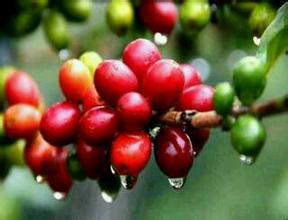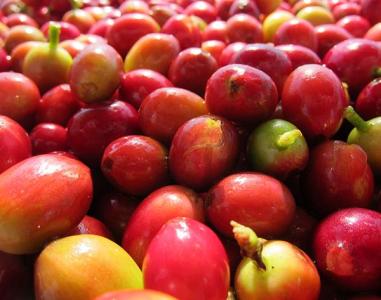Pu'er City, Yunnan Province has become the coffee producing area with the widest planting area and the largest output in China.
According to data from the Yunnan Provincial Water Resources Department, by the end of 2016, more than half of the 5514 reservoirs in Yunnan Province were sick and dangerous reservoirs, which not only did not play their due role in drought relief, but also posed a threat to the lives and property of people downstream. Although Yunnan expects to invest 100 billion yuan to build small water cellars, pools, pumping stations, dams and canals to solve the drought in mountainous areas by 2015. However, the newly built Gaoshan Reservoir is rarely seen in Pu'er. Many of the small reservoirs in use were built in the 1950s and 1960s because there was no spillway and did not dare to store water during the rainy peak. Although in the past two years, due to the high forest coverage of Pu'er and the consolidation of some sick and dangerous reservoirs, the drought here is not as obvious as that in other parts of Yunnan. However, from mid-January to the end of February this year, there was no rain in Pu'er for more than a month, but there was only a little light rain in early March, and spring drought also began to occur in Pu'er. For example, according to the statistics of Pu'er Flood Control and drought Relief headquarters, by the end of February, there were 240900 mu of light drought, 42300 mu of severe drought, and 4700 mu of dry land. Kunming, the provincial capital, has limited water supply for the first time in sub-areas after three years of severe drought.
Pu'er City, Yunnan Province, which gets its name from tea, has become the most widely planted and most productive coffee producing area in China in recent years.
Yunnan, with the third largest amount of water resources and four times the national average per capita, has suffered from years of drought, from agriculture to industry, from rural to urban areas, although it has famous river systems such as the Jinsha River, the Lancang River, and the Nujiang River. After three years of severe drought, we are "baking" how Yunnan's economic development will go hand in hand with ecological protection and disaster prevention in the future.
However, we can see in the local area that the severe drought in southwest China may be restricting the further development of Yunnan coffee industry. As the landform of Yunnan is mainly low hills and gentle slopes, and there is not much flat land, many farmers' tea gardens and coffee gardens are planted on the mountains, forming beautiful terraces. Because coffee gardens are mostly built on mountains, although the temperature is cooler and foggy than the hillsides and foothills, it is not easy to irrigate in severe drought weather. Moreover, local farmers continue to use the traditional method of reclamation, cutting down all the trees and grass on the mountain and then ridging the neat terraces. This single planting method at the cost of destroying the ecology makes it difficult for the plantation to conserve soil and water, and can only wait for rain and rely on the sky for food. Although it is spring, the withered and yellow grasslands can already be seen on the hillsides of some alpine coffee plantations. If the drought continues, these coffee gardens will be very passive. And it is not easy to cure a large area of frost in winter.

Important Notice :
前街咖啡 FrontStreet Coffee has moved to new addredd:
FrontStreet Coffee Address: 315,Donghua East Road,GuangZhou
Tel:020 38364473
- Prev

China's coffee imports and exports showed an upward trend, an increase of 41.9% over the same period last year
Vietnam is the main source of coffee imports for our country. In 2011, coffee imports from Vietnam reached US$67.713 million, accounting for 52.15% of total imports, followed by the United States, Indonesia and Italy. China Business Intelligence Network data show that in 2011, the top three export destinations of coffee in China were Germany, the United States and Belgium, accounting for 31.99% of the total export volume respectively.
- Next

A very representative and excellent variety of Arabica coffee.
Colombia is rich in products, especially coffee, flowers, gold and emeralds known as the four treasures. In 1808, a priest introduced coffee to Colombia for the first time from the French Antilles via Venezuela. Today, the country is the second largest coffee producer after Brazil, the world's largest exporter of Arabica coffee beans and the world's largest exporter of washed coffee beans. Columby
Related
- What is the standard process for the purpose of coffee cup testing? What is the difference between hand-brewed coffee and cup testing?
- How to use hand-brewed coffee paragon small golden balls? How does cold coffee lock in the aroma of coffee?
- Is American coffee black? What is the difference between American coffee and drip coffee?
- Unexpected! Well-known tea beverage brand Lele Tea will withdraw from the Zhengzhou market!
- Starbucks enters the fashion and beauty industry?! Netizen: Give me an ice American eye cream
- Why can American refills for free? The difference between Americano and American drip pot coffee
- Being chased out of the rain in front of Starbucks?! Store: Sheltering from rain under umbrellas poses a safety hazard
- The white moonlight has changed?! Lucky launches "Big Winter Pear American"
- Hand-brewed coffee three-stage method, high-sweet and universal brewing method to share! What does the high sweet water level of hand-brewed coffee mean?
- What is the difference between raw, refined and full espresso coffee? How to extract espresso and taste good?

